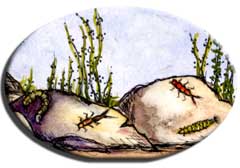Why are bugs important?
 Benthic macroinvertebrates,
which live on the bottom of streams, include early life stages of insects such as dragonflies and mayflies, crustaceans such as crayfish, and worms and
snails. These aquatic “bugs” are eaten by many other animals that live in and around streams, so they have a direct effect on the health
of stream and river ecosystems. Because often they spend their entire lives in streams, they are also useful indicators of water and sediment quality.
Different species of macroinvertebrates have different tolerance levels for stressors such as pollution, so we can determine a great deal about a stream
from the specific mixture of organisms that live there.
Benthic macroinvertebrates,
which live on the bottom of streams, include early life stages of insects such as dragonflies and mayflies, crustaceans such as crayfish, and worms and
snails. These aquatic “bugs” are eaten by many other animals that live in and around streams, so they have a direct effect on the health
of stream and river ecosystems. Because often they spend their entire lives in streams, they are also useful indicators of water and sediment quality.
Different species of macroinvertebrates have different tolerance levels for stressors such as pollution, so we can determine a great deal about a stream
from the specific mixture of organisms that live there.
How are bugs used to measure stream health?
The composition of invertebrate species is a valuable indicator to assess stream health. For example, a stream with a variety of species that includes sensitive species is considered healthier than one with a few pollution-tolerant species. The specific mixture of various species of benthic macroinvertebrates in a stream can be used to develop an index of health. Observed assemblages of invertebrates can be compared with the assemblages expected to occur under conditions of minimal human disturbance.

